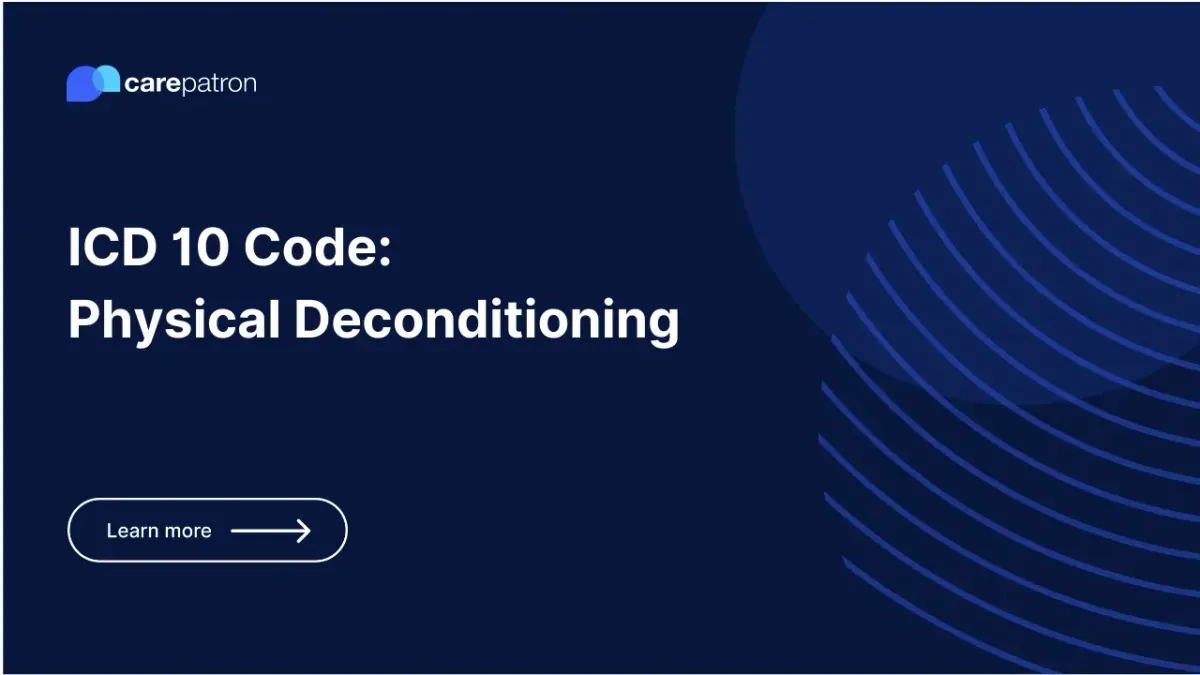
Physical Deconditioning ICD-10-CM Codes
Learn the ICD-10 codes for physical deconditioning, including symptoms, coding accuracy, and clinical documentation tips.
Use Code
Commonly asked questions
Yes, physical deconditioning is typically reversible. Regular, structured exercise and a balanced diet can help improve physical condition and fitness levels.
Yes, physical deconditioning can occur after a week or two of inactivity. However, the rate and extent vary between individuals and depend on the baseline fitness level.
No, while aging can contribute to physical deconditioning due to a natural decrease in physical abilities, they are not the same. Physical deconditioning can occur at any age due to inactivity.
EHR and practice management software
Get started for free
*No credit card required
Free
$0/usd
Unlimited clients
Telehealth
1GB of storage
Client portal text
Automated billing and online payments
